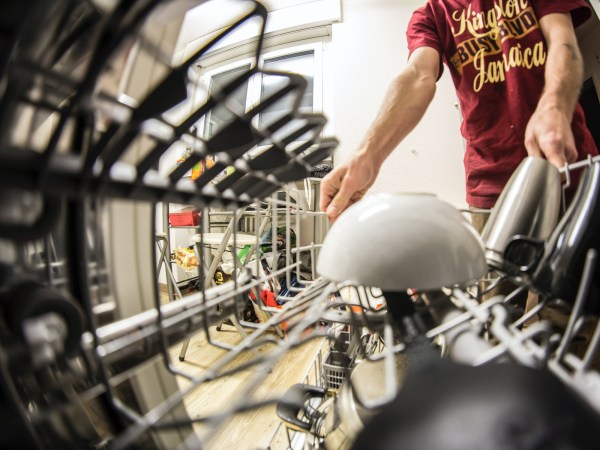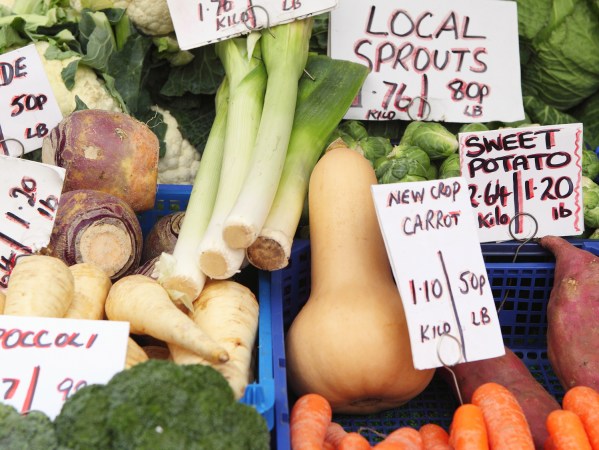

Growing plants can seem intimidating, but we believe anyone can create a thriving home conservatory of any size. We’re here to help nurture your skills and help make that happen, so please feel free to send any plant-related questions of your own to ask@popsci.com with “Plants” in the subject line.
Some 4.5 billion years ago, a bunch of dust from stars clumped together and formed a molten sphere: Earth. Since then, the surface of the planet has cooled, shifted around, formed peaks, and eroded away. Life formed and evolved, with countless generations living, dying, and returning to the earth. This rich history created the dirt in your yard and the soil in your planters.
The past is key to the future of your terra firma. Volcanic rock like perlite and pumice keep the soil from packing together. The decomposing remnants of plants and animals add nutrients. Silica makes up the bulk of most soils, in the form of sand and clay. And, of course, humans have irreversibly altered the ground we stand on, sometimes with disastrous effects.
The present matters too, but you’re probably not going to change the geological course of the planet with your backyard garden. Even so, there are still a few ways even small-time soil caregivers can make sure they’re not causing real harm.
Test your soil
Before you add store-bought fertilizer, aspirin, urine, or anything else to your soil, you should send the soil in for testing. The results will influence your nutrient compensation decisions. Animal manure, for example, can be slightly alkaline, so you might choose a different option if you live somewhere that already has alkaline soil and your plants don’t prefer that pH.
In the US, you can learn about your soil from this country’s best-kept secret: extension services. Nearly every land-grant university has one. Extension offices are a group of experts who specialize in applying science to practical situations—often agriculture, but also more home-based activities, such as soil testing. Look up your local extension service to see if they have a soil testing laboratory—a facility that can test factors like pH, plant nutrients, salt levels, organic matter content, and even lead contamination.
Add fertilizers—or don’t
Artificial fertilizers are energy-intensive to make and create nitrous oxide, a greenhouse gas that’s 300 times more effective at trapping heat than carbon dioxide. When it rains, these nutrients can wash out of the soil and into bodies of water, where they create algae blooms that are sometimes toxic. The blooms also suck up oxygen, causing dead zones where other marine organisms can’t survive. Fertilizers have allowed modern agriculture to support billions more people than it could otherwise, but you probably don’t need any for your garden to thrive, especially if you’re using natural fertilizers like horse manure.
[Related: Compost can help protect us from food poisoning]
Megan Balks, a soil and environmental scientist who co-runs a New Zealand surveying company called Earthbrooke Views and works as an adjunct senior research fellow at the University of Waikato, suggests finding pea straw, as legumes capture and store nitrogen naturally. If you decide you do need chemicals, adjust the amount you add based on the results of your soil tests, so you’re not adding too much. For example, if the soil is too acidic, you can add limestone to make it more alkaline. Your region’s native plants are adapted to your area, so they are less likely to need fertilizer.
Buy potting mix
While digging up some soil from your yard and throwing it in a pot might seem like the easiest and most environmentally friendly option, it doesn’t actually work that well in practice. The dirt from your yard will be heavy and may cause drainage issues as it packs tightly into pots. The easiest solution is to buy potting soil, which will have its mineral makeup detailed on the bag. The contents are probably mostly organic matter—recently living organisms that are now decaying. This works well for for container gardening, says Stephanie Murphy, who runs the soil testing laboratory at the New Jersey Agricultural Experiment Station at Rutgers University. You will need to replace the soil at least once every few years, but most houseplant owners already do that.
If you want to avoid the carbon footprint of a truck hauling your store-bought soil from an unspecified distance, you can see if your city has a compost program. You can also make your own. When you pot your plant, you can add a lightweight volcanic rock like perlite or pumice for better drainage, especially for plants like succulents that prefer drier soils. But if you let your soil dry out completely, it will become hydrophobic, Murphy says. You’ve experienced desiccated soil if water has ever pooled around the base of your houseplants instead of soaking down to its roots.
While most of the ingredients in potting soil have a negligible toll on the planet’s ecosystems, peat is a problem. Peat is an accumulation of sphagnum moss and other organic matter that grows in wet areas. It’s a perfect growing medium for many plants, as it holds moisture and oxygen without getting sodden. But the environmental costs are serious enough that organizations like the London Horticultural Society now avoid using it. Even though peat bogs make up less than 4 percent of land surface, they store 42 percent of soil carbon, according to the International Union for the Conservation of Nature. Harvesting peat removes the best carbon sink on the planet, and that’s simply not a sustainable way to care for your garden or houseplants.
In the short term, taking the extra effort to test your soil and research the nutrients you need will take more work. But hopefully, tending well to the bits of earth in your care will mean a better future for your little portion of the planet.














